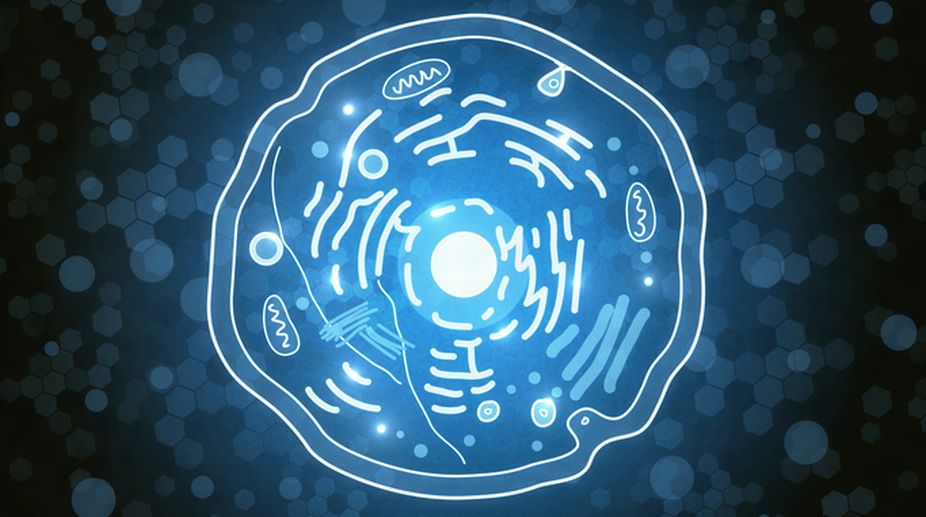Peroxisomes, like the Golgi complex and lysosomes, are bound by single membranes. This organelle is found in all euk-aryotic cells but is especially prominent in mammalian kidney and liver cells, in algae and photo-synthetic cells of plants, and in germinating seedlings of plant species that store fat in their seeds. Peroxisomes are somewhat smaller than mitochondria, though there is considerable variation in size, depending on the tissue in which they are found.
Regardless of location or size, the defining characteristic of a peroxisome is the presence of catalase — an enzyme essential for the degradation of hydrogen peroxide (H202). Hydrogen peroxide is a potentially toxic compound that is formed by a variety of oxidative reactions catalysed by oxidases. Both catalase and the oxidases are confined to peroxisomes. Thus, the generation and degra-dation of H202 occur within the same organelle, thereby protecting other parts of the cell from exposure to this harmful compound. Before discussing the functions of peroxisomes further, let us look at how peroxisomes were discovered and how they are distinguished from other organelles when viewed by electron microscopy.
Christian de Duve and his colleagues discovered not only lysosomes but also peroxisomes. During the course of their early studies on lysosomes, the researchers encountered at least one enzyme, urate oxidase, which appeared to be associated with lysosomal fractions but was not an acid hydrolase. By using a gradient of sucr-ose concentration, the researchers found that the urate oxi-dase from rat liver was recovered in a region of the gradient having a slightly higher density than that of other organelles, such as lysosomes and mitochondria.
Advertisement
Once separation of this new organelle was achieved, additional enzymes were identified in the fractions containing urate oxidase, including catalase and D-amino acid oxidase. Catalase degrades H202 and like urate oxidase, D-amino acid oxidase generates H202. Because of its apparent involvement in hydrogen peroxide metabolism, the new organelle became known as a peroxisome.
Once peroxisomes had been identified and isolated biochemically, the existence of orga-nelles with the expected properties was confirmed by electron microscopy- first in isolated peroxisomal fractions from density gradients and then in intact cells. Peroxisomes turned out to be the functional equivalents of organelles that had been seen earlier in electron micrographs of both animal and plant cells. Because their function was not known at the time, these organelles were simply called microbodies. In both plant and animal cells, a microbody is usually about 0.2-2.0/lm in diameter, is surrounded by a single membrane, and generally has a finely granular matrix (interior of the organelle).
Animal peroxisomes often contain a distinct crystalline core, which usually consists of a crystalline form of urate oxidase. Crystalline cores are also often present in the peroxisomes of plant leaves but these usually consist of catalase instead. When such cores are present, it is easy to identify microbodies as peroxisomes, since urate oxidase and catalase are two of the enzymes by which peroxisomes are defined. In the absence of a crystalline core, however, it is not always easy to spot peroxisomes ultra-structurally. A useful technique in such cases is a cyto-chemical test for catalase called the diaminobenzidine reaction. This assay depends on the ability of catalase to oxidise DAB to a polymeric form that causes deposition of electron-dense osmium atoms when the tissue is treated with osmium tetroxide (Os04). The resulting electron-dense deposits can be readily seen in cells from stained tissue. In animal peroxisomes, the entire internal space often stains intensely with DAB, indicating that catalase exists as a soluble enzyme uniformly distributed throughout the matrix of the organelle. In plant leaf cells, DAB treatment preferentially stains the crystalline cores of the peroxisomes, thereby definitively identifying the cores as crystalline catalase.
Because catalase is the single enzyme present in all peroxisomes and does not routinely occur in any other organelle, the DAB reaction is a very reliable and highly specific means of identifying organelles unambiguously as peroxisomes.
The writer is Associate Professor, Head, Department of Botany, Ananda Mohan College, Kolkata, and also fellow Botanical Society of Bengal, and can be contacted at tapanmaitra59@yahoo.co.in
Advertisement










